Ultimate Southern Africa
21 days, 20 nights
Price Range:
$21,594 – $68,134
(all-inclusive price per person, depending on dates & camps selected)
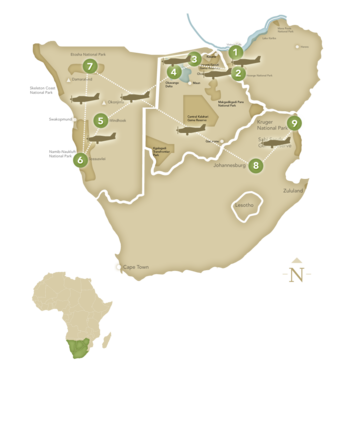 view larger image
view larger image
For most travelers, an African safari is a once-in-a-lifetime adventure. Why not choose a route that is truly epic? The natural wonders of Southern Africa are so many, and so diverse, that only a grand 3-week swing through Zimbabwe, Botswana, Namibia and South Africa will begin to survey them. Stand in the crashing spray of Victoria Falls. Track lion and leopard, photograph huge elephants, muse beneath the stars over delta and dunes…It’s all here on the ultimate Southern Africa explorer.

Our Expert Says
This itinerary is nothing short of a truly epic adventure, taking advantage of an array of the best wildlife-viewing opportunities in all of southern Africa. And on top of the amazing animals, it delivers superlative landscapes in spades – the world’s largest waterfall, some of the highest (and most beautiful) sand dunes on the planet, and earth’s largest inland delta.
– Court Whelan
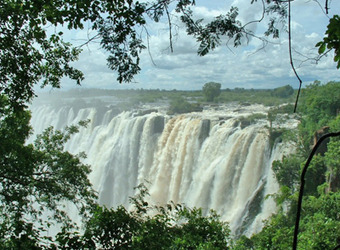 view image gallery
view image gallery
Days 1-2: Victoria Falls (Zimbabwe side)
One of the Seven Natural Wonders of the World, Victoria Falls is the largest sheet of falling water on earth: over a mile wide as it plunges 350 feet into the Zambezi Gorge. The thundering cataract straddles the border between Zimbabwe and Zambia, churning up a deluge of spray. This is adventure country: see the falls from a helicopter or microlight, raft the rapids, canoe the placid current or enjoy a sunset cruise above the falls.
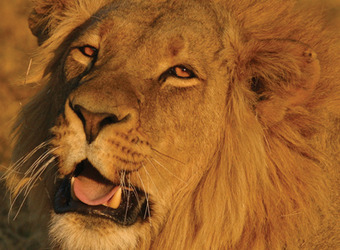 view image gallery
view image gallery
Days 3-5: Hwange Nat'l Park
Bordering the Kalahari Desert on Zimbabwe’s western edge, Hwange is the country’s largest national park. Its 5,600 square miles of desert sand, sparse woodland, grasslands and granite outcrops shelter vast herds of elephant, buffalo, zebra, giraffe and a vital predator population, including lion, leopard and cheetah. You may even see one of Hwange's select few resident white rhinoceros. Other endangered residents include gemsbok, brown hyena and African wild dog.
 view image gallery
view image gallery
Days 6-8: Linyanti / Savuti Reserves
The Linyanti and Savuti region of northern Botswana is noted for its shifting landscapes, from riverine to dry pans, woodlands to plains. Perennial water attracts great herds of animals that come to slake their thirst in the dry season. The once-flowing Savute Channel, which experiences long, unpredictable intervals of drought, cuts through the reserve. Large prides of lion and other predators steal behind, making for exciting wildlife viewing. Elephant, zebra and giraffe are also abundant.
 view image gallery
view image gallery
Days 9-11: Okavango Delta
Where the Okavango River meets the Kalahari Desert, a green oasis sprawls amid the sands and parched savanna. The maze of channels sustains a profusion of wildlife in permanently flooded lagoons and on land. Explore the marsh by poled mokoro, a traditional dugout canoe, and wildlife drives on higher ground. Islands and wetlands are home to prolific birdlife, hippo and red lechwe, while elephant, lion, leopard, zebra and more thrive beyond the water’s reach.
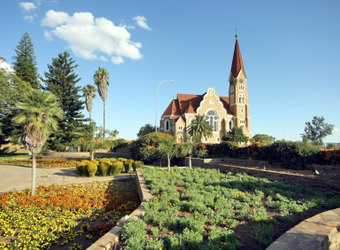 view image gallery
view image gallery
Day 12: Windhoek
Windhoek is Namibia’s capital and largest city. Surrounded by rolling mountains, Windhoek was the former colonial capital of German South-West Africa. While its population today is a diverse and cosmopolitan blend of cultures, Windhoek still retains much of its German heritage evidenced in language, architecture and cuisine. The city center has a European café-culture feel, relaxed and eclectic, with a pedestrian precinct, bustling shops and market stalls.
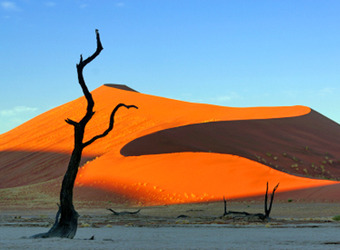 view image gallery
view image gallery
Days 13-14: Sossusvlei
A vast clay pan surrounded by the world's tallest sand dunes, Sossusvlei is one of the most striking vistas in all Africa. The dunes soar a thousand feet high in the lonely Namib Desert, shape-shifting mountains of golden sand framed by intense blue skies. Sunrise and sunset are magical, when the dunes appear burnt orange and deep carnelian red. Surprisingly, Sossusvlei is home to a variety of desert-adapted wildlife.
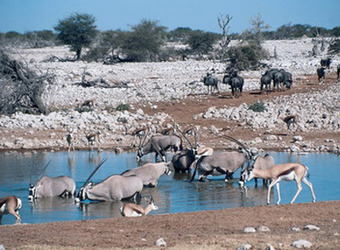 view image gallery
view image gallery
Days 15-16: Etosha Nat'l Park
One of Africa’s premier wildlife sanctuaries, the Etosha salt pan is the remnant of an enormous prehistoric lake. Bare and dry today except for seasonal springs, the depression offers Namibia’s best animal viewing. Elephant, black and white rhino, lion, leopard, cheetah, giraffe, zebra, wildebeest, hartebeest, springbok, oryx, kudu and dik-dik are drawn to its life-sustaining waterholes during the dry season. Birdlife is abundant, with ostrich and raptors frequently observed.
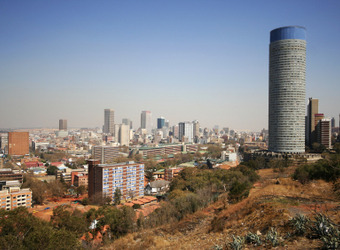 view image gallery
view image gallery
Day 17: Johannesburg
Cosmopolitan Johannesburg is the jumping-off point for most South African safaris. The city of four million is a vibrant mélange of colors and cultures. Food and music are central to life in ‘Joburg,’ and its clubs and pubs are an integral part of the social fabric. Tour Soweto or visit the Apartheid Museum to gain a deeper understanding of Johannesburg’s history, travails and rich multicultural heritage.
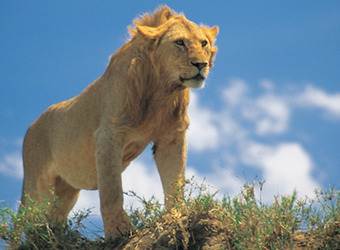 view image gallery
view image gallery
Days 18-20: Kruger National Park
World-renowned Kruger National Park in South Africa is a flagship destination for safari-goers, thanks to its dense wildlife populations. Checking off the big cats, major mammals and a host of bird species is a given in this diverse ecosystem. A number of private game reserves dot the greater park area providing exclusive access to the treasures here and allowing a variety of modes to experience them, from wildlife drives in open vehicles to intimate safari walks.
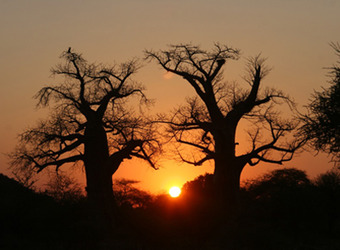 view image gallery
view image gallery
Day 21: Johannesburg/Home
Your safari adventure ends today in Johannesburg, South Africa.
